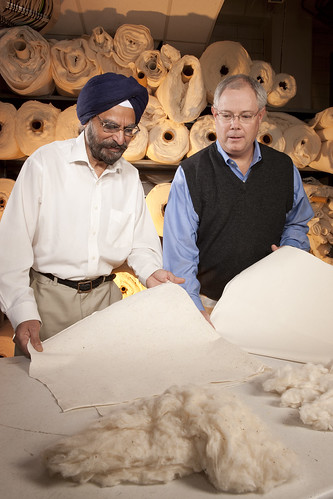
This post is part of the Science Tuesday feature series on the USDA blog. Check back each week as we showcase stories and news from the USDA’s rich science and research portfolio.
During the month of April we have taken a closer look at USDA’s Groundbreaking Research for a Revitalized Rural America, highlighting ways USDA researchers are improving the lives of Americans in ways you might never imagine.
Ag research month has been an excellent opportunity to showcase all the ways in which USDA is truly the “People’s Department.”
That’s how President Lincoln described it after USDA was established in 1862. More than 150 years later, we continue to find innovative ways to improve agricultural production and create new products to benefit the American people.
In recent posts, we’ve talked about how USDA scientists are protecting watersheds and underground aquifers, discovering new organisms with high-tech microscopes, improving food safety, and preserving garlic varieties that can benefit small farmers who can, in turn, offer them to consumers at farmers’ markets. We’re also helping to develop the next generation of scientists who will continue the USDA tradition of scientific innovation that has resulted in everything from frozen food to permanent press cotton to the mass production of penicillin.
USDA is redoubling its efforts to transfer technology from the laboratory to the marketplace, where consumers can benefit from new products. Last week, USDA released its annual technology transfer report for 2013. The report documents research accomplishments from Federal scientists, as well as highlights success stories from partnerships USDA scientists have established with outside investigators at universities and private companies. By entering into these partnerships, we are leveraging our limited resources to get the biggest bang for the buck.
In Fiscal Year 2013, USDA filed 147 patent applications, received 51 patents, and disclosed 180 new inventions. We also have 259 active Cooperative Research and Development Agreements with outside investigators, including 117 with small businesses.
These types of cooperative agreements continue to bear fruit and often lead to groundbreaking research discoveries that benefit the American public. For example, a USDA Agricultural Research Service stakeholder, T.J. Beall Company, recently won an international award for its product called True Cotton™, a cotton fiber specific for use in nonwoven fabrics.
Under a cooperative agreement with ARS and a USDA SBIR grant, the company developed and launched True Cotton™, the first non-bleached cotton that can be used specifically in nonwoven products like wipes and diapers. ARS researchers at New Orleans, La., have conducted studies using True Cotton™ to demonstrate its suitability for processing into these products. The more than $50 billion nonwoven market is a significant true business expansion opportunity for U.S. cotton because it is currently dominated by synthetic materials due to technical reasons.
At USDA, we will continue to enter into these types of agreements to bring innovations to the people—a fitting mission for the “People’s Department.”
